Whether it’s the busy boulevard at your front curb or the kids next door having a screamingly good time, a noisy environment makes it hard to relax and enjoy your yard. Noise pollution is a stressful irritant that is almost impossible to eradicate, but a few design strategies can help quiet things down.
Here are some concepts to keep in mind when it comes to noise control:
- Sound travels by waves that generally rise upward when originating at ground level; tall barriers help moderate noise.
- Plants absorb, deflect, refract and reflect noise.
- Desirable white noise can mask undesirable noise.
Let’s look at some ideas for easing the noise in residential landscapes.
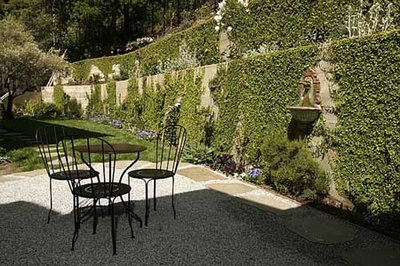
Pedersen Associates
Suppress noises with a tall barrier. The goal is to create a tall, wedge-shaped barrier that directs sound waves upward. A solid wall will go a long ways towards moderating noises. Hard surfaces like masonry, stucco or stone will reflect sound waves and bounce them up and back toward the source.
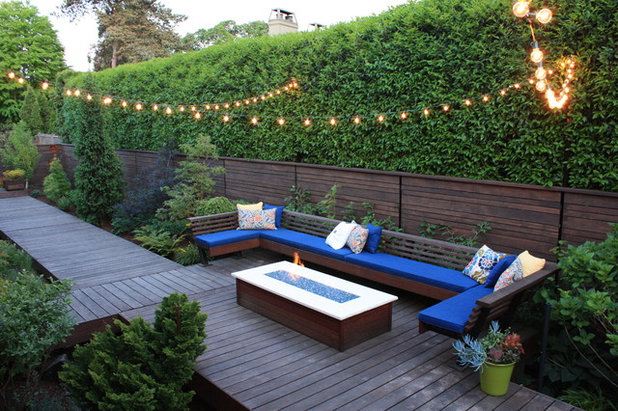
Fifth Season Landscape Design & Construction
Conversely, when flexible surfaces are hit by sound waves, they vibrate more and absorb more sound. Plants absorb and diffuse sound via their leaves, branches, twigs and bark.
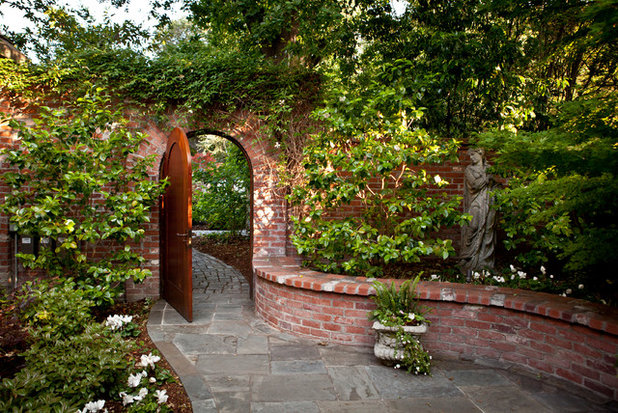
Design Focus International
Therefore, combining a wall or fence
and plant material is ideal.
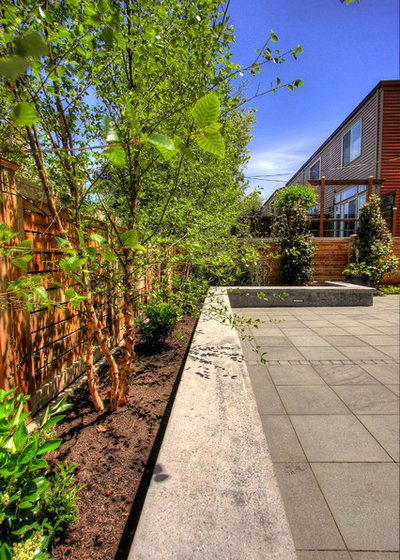
Paradise Restored Landscaping & Exterior Design
Planting in a raised bed is a way to create more height quickly. This is particularly helpful when budget or municipal codes limit how tall your built structures can be.
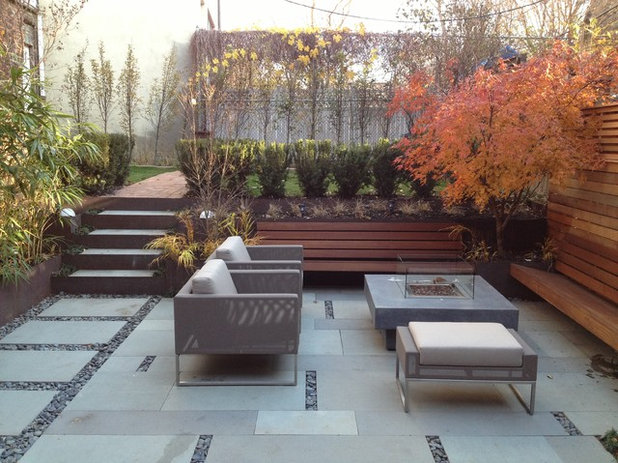 Carve out a quiet space.
Carve out a quiet space. If building a tall sound barrier is impractical, consider building a sunken space for outdoor gatherings instead. While creating height inversely, a sunken area has the additional benefit of a sound-deadening soil surround.
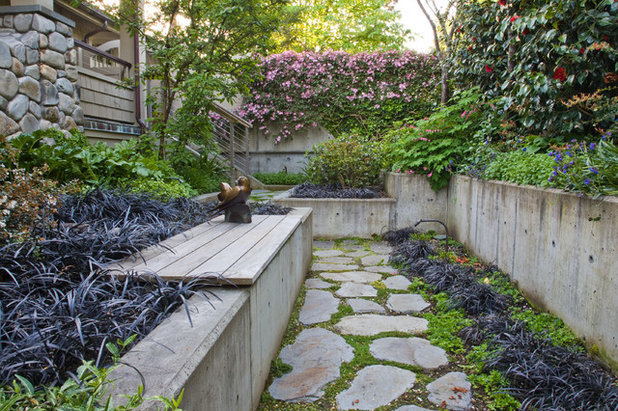
Island Gardens Company
Berms or retaining walls and lush plantings can create a peaceful and intimate hideaway.
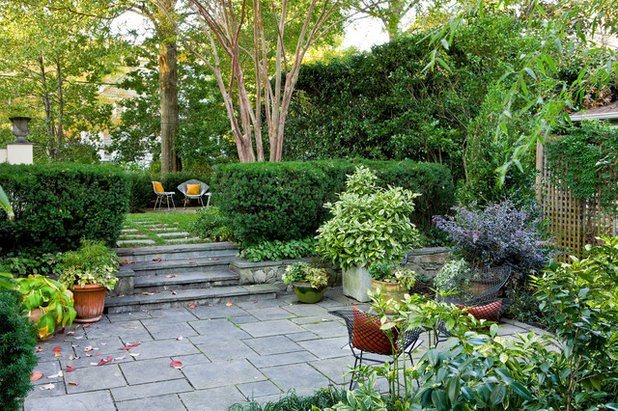
Scott Brinitzer Design Associates
Select plants with sound suppression in mind. Wide, dense plantings that include both deciduous and evergreen plants are the most effective for year-round noise abatement.
Plants set in motion by the wind create their own sounds that are generally appealing — celebrated in music and literature — and that can help mask offensive noises.

AMS Landscape Design Studios, Inc.
Create additional layers of white noise. Multiple layers of desirable sounds work together to mute or take attention away from undesirable noises. A simple water feature may provide enough soothing sound to distract from annoying noises.
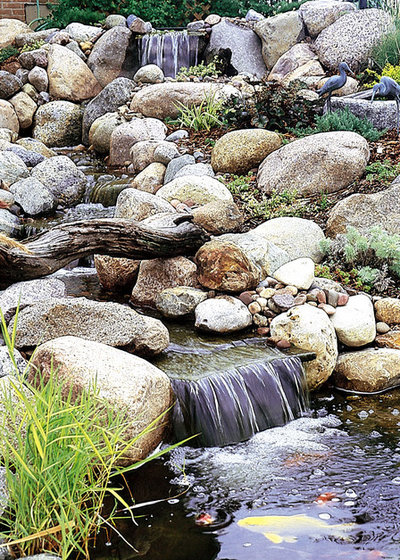
California Waterscapes
A flowing stream with several mini waterfalls creates a melody of sound that can be a major improvement in environmental sound quality.

Aquascape
And a large, falling volume of water can create enough of a roar to block out all but the loudest noises.
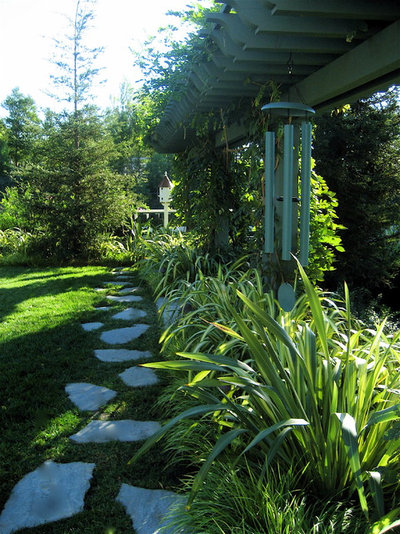
Gilson Group Landscape Design
Wind chimes, bells, flags or bunting when activated by a breeze can also contribute background sounds that help muffle unwanted noise.

Michael Kelley Photography
A combination of techniques for moderating sound can work together to create a beautiful outdoor space that you will love living in. As always, being a good neighbor goes a long way toward a peaceful lifestyle, too; if you have an active (noisy!) clan, you can implement some of these strategies as a courtesy to your neighbors.





